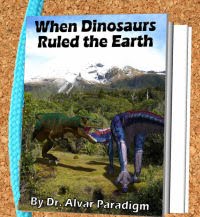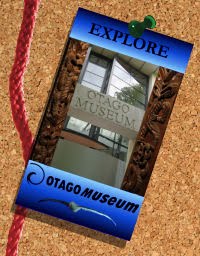so far my attempts at figuring this out haven't produced many answers (only more questions really...), but hampering myself i'd been trying to not "actively" poke around the situation.
for my stumbling into events in the first place had not gone unnoticed. it had made professor paradigm unhappy with me, and worse the primordials had sent their raptor squad (the crimson talons) to try and kill me!
so i didn't feel safe now, whether i was actively investigating the case or not. if i was going to get the pack to leave me alone while i was in canada, i was going to have to blow the lid off whatever they were up too... assuming it had a lid. which come to think of it, i don't think it would or could...
since i'd exhausted the information i already had, i was going to have to gather more...
 which meant rechecking the poached sites. meaning i was now once again actively back in the case... PLEASE don't tell professor paradigm!
which meant rechecking the poached sites. meaning i was now once again actively back in the case... PLEASE don't tell professor paradigm!
the instant i hit the field i was in for some shocks. i realized i hadn't investigated the poachings as thoroughly as i should have...
at the first site, while checking the surrounding hills for possible geologic clues, i stumbled on a most distressing sight.
broken bones lying on the ground, but not broken by normal erosion. no sir, these bones had clearly been broken by being thrown down the hill... not only were they in pieces, but surrounded by chunks of rock that they'd been in till being hurled down here...
the big quarry pit was a trick! whoever had done this, had simply been digging a big hole for appearance's sake. they wanted someone (like this small tyrannosaur) to think there had been a big excavation here!...
in reality they'd simply dug out a huge pile of rock, moved it a hill over and dumped it.
along the way it appears they'd accidentally hit a few bones (which these rocks are full of!), but as the fossils were nothing specular, so the poachers just heaved them over the hill with the rock...
i could tell the bones had been hit later in the dig, as they were towards the top of the "slag" pile. the rule of super position clearly indicated that for the bones to be on top they must have been thrown here last. any earlier and they'd have been at the bottom of the pile.
of and slag if you are wondering is a palaeontologists word for the excess rock that gets removed during a dig and thrown away.
i was suspicious now!
checking the third site, after wandering a few of the hills behind this "dig", i found another slag pile. the exact same thing except no fossils at all. it was enough rock to perfectly fill back in the dig pit.
so the poachers were digging decoy quarries, to make it look like they were stealing big specimens... but why?
the answer must have been the plenty of small dig pits scattered around the first and second sites.
these i discovered had been field jacketed. meaning something had defiantly been taken out of these very small quarries properly (unlike the decoy pits!).
i'd been so preoccupied with the bigger looking digs, i hadn't noticed these clear small fossil thefts... the question was what would be so valuable to the pack and yet be so small?
 i noticed something about the rock layers these fossils had been dug out of at both sites. there were a ton of fossil clam and snail shells amongst the specific layers... i didn't know what to make of this.
i noticed something about the rock layers these fossils had been dug out of at both sites. there were a ton of fossil clam and snail shells amongst the specific layers... i didn't know what to make of this.normally you find the clams in marine (ocean) deposits towards the east end of the valley, but i was well up the valley from there. the inland sea of the cretaceous had drained by the time of the rocks i was looking at... or had it? i guess these could have been fresh water clams from one of the lakes of the time.
the snail shells made more sense in a way, as they often wash down the hill from the glacial lake drumheller layer on the top of the valley. however that meant this layer was heavily altered since the cretaceous, and nothing valuable should come from it.
it made no sense no matter how i tried to explain it...
were these layers a very late (and probably the last ever) intrusion by the draining bearpaw sea? what shallow oceanic fossils could the pack possibly want?
was it a bad layer for collecting run off from the top of the valley, and thus be full of fossils from anywhere between 70 million years ago to 15 thousand? why would anyone want fossils from such a contaminated section?
or was it the deposit of a freshwater lake or river from the cretaceous? again what living at the bottom of a lake or river would interest coelurosaurs?
i couldn't see any of these producing unique or particularly desirable fossils...
 fortunately for me i hit pay dirt exploring further along both layers... i for both localities micro fossil sites!
fortunately for me i hit pay dirt exploring further along both layers... i for both localities micro fossil sites!if you want to know more about micro fossils check out the video i did about them here.
 i collected as many of the surface ones as i could (i didn't have either the equipment, or more importantly permission to dig for more out of the ground properly), and brought them back to the museum!
i collected as many of the surface ones as i could (i didn't have either the equipment, or more importantly permission to dig for more out of the ground properly), and brought them back to the museum!
though i could tell what many of the fossils were themselves, i didn't have the expertise to get much beyond this. all of them together properly identified were no doubt key clues to the mystery...
several palaeontologists at the museum, on the other hand, were nothing BUT micro fossil gurus! with these fossils hopefully these scientists could tell me not only what type of an environment those poached layers were, but through that insight potentially what the stolen fossils were!
to be continued... with special palaeontologist guest stars!







































 we spent the next 20 minutes carefully pouring a few coats of adhesive glue onto the bones to help hold them together, and strengthen them against the erosional elements...
we spent the next 20 minutes carefully pouring a few coats of adhesive glue onto the bones to help hold them together, and strengthen them against the erosional elements... though sadly not all the (exposed) bones were in great shape. i glued this one as best i could, but there wasn't a lot of it left sadly.
though sadly not all the (exposed) bones were in great shape. i glued this one as best i could, but there wasn't a lot of it left sadly.

 taking my own look, tony certainly had found "something". it was a
taking my own look, tony certainly had found "something". it was a 

 which with the two teeth so close together in front of me (with a
which with the two teeth so close together in front of me (with a 
 we were shocked to come across signs of other people being out here recently... in the form of a bunch of abandoned stuff. which on closer inspection could have only been left by one type of person... fossil hunters!
we were shocked to come across signs of other people being out here recently... in the form of a bunch of abandoned stuff. which on closer inspection could have only been left by one type of person... fossil hunters!
 this dinosaur vertebrae was our first "cool" find of the day. due to its heavy encasing in iron stone, we couldn't ID it. however as this is the
this dinosaur vertebrae was our first "cool" find of the day. due to its heavy encasing in iron stone, we couldn't ID it. however as this is the  when tony came to inspect it, he was of the same opinion as me. we'd found plenty of broken scraps of bone so far, and this was our only in-
when tony came to inspect it, he was of the same opinion as me. we'd found plenty of broken scraps of bone so far, and this was our only in- at the same time tony was impressed. not that either of us thought i was bad at fossil hunting. we're both just used to him outshining me in the field on
at the same time tony was impressed. not that either of us thought i was bad at fossil hunting. we're both just used to him outshining me in the field on  my last find of today had me think maybe the tables had turned. maybe
my last find of today had me think maybe the tables had turned. maybe  an intact
an intact 

 it became pretty clear why they'd been mining this area. though there were many
it became pretty clear why they'd been mining this area. though there were many  then as i walked around a bend my heart nearly stopped. on the hill in front of me was a bunch of junk!
then as i walked around a bend my heart nearly stopped. on the hill in front of me was a bunch of junk! turning around to excitedly call over tony and yumi, i realized the few scraps i saw on the hillside were just the tip of the... uh coal-berg. scattered all around me were yet more remenants and left overs of the coal mine's operations... definately not stuff left behind by francis slate.
turning around to excitedly call over tony and yumi, i realized the few scraps i saw on the hillside were just the tip of the... uh coal-berg. scattered all around me were yet more remenants and left overs of the coal mine's operations... definately not stuff left behind by francis slate.

 of course the lure of fossil treasure, and possible fame (in the science world anyway) were too much for a
of course the lure of fossil treasure, and possible fame (in the science world anyway) were too much for a 
 which funny enough is what i did by accident while trying to set up my camera and pose for the shot (which in my defense is REALLY hard when you have arms as short as mine!) on top of the often slippery rocks of the badlands (now
which funny enough is what i did by accident while trying to set up my camera and pose for the shot (which in my defense is REALLY hard when you have arms as short as mine!) on top of the often slippery rocks of the badlands (now 
 you also can't help but see it in the rocks either when fossil/quarry hunting. this end of the
you also can't help but see it in the rocks either when fossil/quarry hunting. this end of the  not that you have to ID that many layers. more than half the major coal seams in the valley run through the east end of the valley. which is why so many more coal mines used to exist down here, than in
not that you have to ID that many layers. more than half the major coal seams in the valley run through the east end of the valley. which is why so many more coal mines used to exist down here, than in  though in the layers between the coal we do get a few fossils. these are funny enough not from land animals or plants at all though. rather shallow marine (aka ocean) critters. such as this clam.
though in the layers between the coal we do get a few fossils. these are funny enough not from land animals or plants at all though. rather shallow marine (aka ocean) critters. such as this clam.


 walking to the valley wall i decided to climb to the top. as this is the side of the badlands it has the highest
walking to the valley wall i decided to climb to the top. as this is the side of the badlands it has the highest  that sounded easier than it actually was though. man those hills are deceptively steep!
that sounded easier than it actually was though. man those hills are deceptively steep!


 which as a story is cool. which if your a geologist is cool. which if your a dinosaur fossil hunter is uncool...
which as a story is cool. which if your a geologist is cool. which if your a dinosaur fossil hunter is uncool... the glacial lake
the glacial lake 






